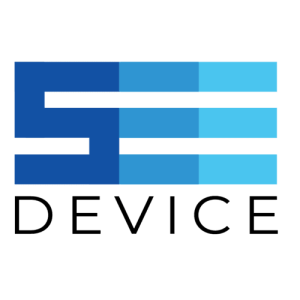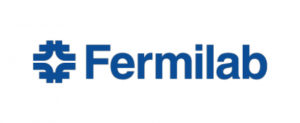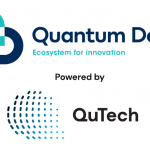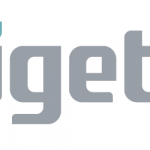Quantum News Briefs October 17: SeeDevice recognized as ‘Company of the Year’ of Top 10 Semiconductor Tech Startups 2023 for QMOS™ (Quantum effect CMOS), EuroHPC JU launches procurement for EuroHPC quantum computer to be hosted in Poland; Fermilab receives DOE funding to further develop nationwide quantum network + MORE

Quantum News Briefs October 17:
SeeDevice recognized as ‘Company of the Year’ of semiconductor tech startups 2023 by Semiconductor Review for QMOS™ (Quantum effect CMOS)
 SeeDevice Inc., the fabless QMOS™ (Quantum effect CMOS) SWIR sensor developer, announced October 16 that it has been recognized as Company of the Year of the Top 10 Semiconductor Tech Startups 2023 by Semiconductor Review, an established magazine that provides comprehensive views of recent developments in the semiconductor space. This award is evaluated by a panel following the standard MCDA (multi-criteria decision analysis) method and peer recommendation. Dr. Hoon Kim, Founder and CEO of SeeDevice will speak at IQT NYC 2023. Quantum News Briefs summarizes the announcement with details about SeeDevice’s technology.
SeeDevice Inc., the fabless QMOS™ (Quantum effect CMOS) SWIR sensor developer, announced October 16 that it has been recognized as Company of the Year of the Top 10 Semiconductor Tech Startups 2023 by Semiconductor Review, an established magazine that provides comprehensive views of recent developments in the semiconductor space. This award is evaluated by a panel following the standard MCDA (multi-criteria decision analysis) method and peer recommendation. Dr. Hoon Kim, Founder and CEO of SeeDevice will speak at IQT NYC 2023. Quantum News Briefs summarizes the announcement with details about SeeDevice’s technology.
SeeDevice’s technology was developed to extend the range of pure CMOS sensors by leveraging two key concepts – plasmonics and quantum tunneling – to see beyond visible light into the short-wave infrared (SWIR) region while overcoming the high costs associated with exotic material-based SWIR sensors. The resulting technology has exceeded expectations and outperformed expensive competitors, attracting the attention of various industries.
“SeeDevice’s patented silicon-based quantum effect photodetector technology delivers high-performance SWIR capabilities in proven, cost-effective standard CMOS processes. It enables mass production and we’re ready,” said Dr. Hoon Kim, Founder and CEO of SeeDevice.
Dr. Kim, a semiconductor pioneer with over 25 years of research experience in nanophotonic and quantum electronics, will speak at IQTNYC 2023, the leading conference and exhibition organization covering quantum computing and technology worldwide.
SeeDevice is positioned at the forefront of the industry, offering high sensitivity, nanosecond integration time, scalability, and wide dynamic and spectral range (200-1650nm) to provide unmatched performance for clients’ needs spanning across biomedical, automotive, surveillance, agriculture, and consumer products like mobile phones and machine vision-enabled industry applications. Recently, SeeDevice has successfully developed a NI-CGM (Non-invasive continuous glucose monitoring) device and is currently in clinical trials with plans to enter the CGM market soon.
“SeeDevice closed nearly 10 million dollars of Series A funding and plans to invite the investors for our Series B round in the near future,” said Sean Oh, Sr. VP of SeeDevice.
“SWIR has not been actively explored due to technical limitations despite its high potential. We will be the game changer for popularizing SWIR sensors worldwide by utilizing them for industrial applications and products that are more accessible to consumers,” said Dr. Kim. Click here to read the news announcement in-entirety.
EuroHPC JU launches procurement for EuroHPC quantum computer to be hosted in Poland
 The EuroHPC Joint Undertaking has launched a call for tender to procure the first EuroHPC quantum computer, which will be based on trapped-ions. EuroQCS-Poland will be a digital, gate-based quantum computer offering 20-plus physical qubits. Quantum News Briefs summarizes the October 16 announcement.
The EuroHPC Joint Undertaking has launched a call for tender to procure the first EuroHPC quantum computer, which will be based on trapped-ions. EuroQCS-Poland will be a digital, gate-based quantum computer offering 20-plus physical qubits. Quantum News Briefs summarizes the October 16 announcement.
The system will be hosted at the Poznan Supercomputing and Networking Center PSNC in Poland and integrated into the local high-performance computing (HPC) infrastructure allowing for remote access via the co-located supercomputer connected to thenPIONIER NREN,
PSNC leads the EuroQCS-Poland consortium, which consists of two additional Polish partners, the Center for Theoretical Physics Polish Academy of Science and Creotech Instruments S.A, and one academic partner from Latvia, the University of Latvia.
EuroQCS-Poland will primarily target research, development and innovation and will be available to a wide range of European end-users, from the scientific community to industry and the public sector. The upcoming quantum computer infrastructure will support the development of a wide range of applications with industrial, scientific and societal relevance for Europe, adding new capabilities to the European supercomputing infrastructure.
The acquisition and integration of quantum computers into existing HPC data centres is EuroHPC’s first initiative in procuring quantum computing hardware in Europe. The total cost of ownership of the system is EUR 15.5 million. The EuroHPC JU will fund 50% of the total cost of the acquisition, integration and operating cost of the new machine, and the remaining 50% will be funded by the Ministry of Digital Affairs of Poland. Click here to read the announcement in-entirety.
Fermilab receives DOE funding to further develop nationwide quantum network
 The U.S. Department of Energy’s Fermi National Accelerator Laboratory will receive a total of $9 million in funding over three years for its Advanced Quantum Networks for Scientific Discovery (AQNET-SD) project. AQNET-SD will build upon previous groundbreaking work toward establishing national-scale quantum networks by using sophisticated techniques to push the technology to its limits. The funding is provided by the DOE Office of Science Advanced Scientific Computing Research program.
The U.S. Department of Energy’s Fermi National Accelerator Laboratory will receive a total of $9 million in funding over three years for its Advanced Quantum Networks for Scientific Discovery (AQNET-SD) project. AQNET-SD will build upon previous groundbreaking work toward establishing national-scale quantum networks by using sophisticated techniques to push the technology to its limits. The funding is provided by the DOE Office of Science Advanced Scientific Computing Research program.
DOE is advancing research in quantum networks that can lead to a nationwide quantum internet which enables the development of new capabilities and enables new applications beyond what can be achieved with classic networks. The networks are aimed at making it possible to interconnect multiple quantum devices and realize a diverse set of protocols that enable the amount of precision required when taking measurements and scaling up quantum computers. Essentially, this work can help transform science, the economy and everyday life; the science enabled by the new networks could lead to faster cars, new medicines and improved manufacturing materials.
Transmitting quantum data across long distances is a challenge. AQNET-SD researchers will develop several technologies and protocols to establish and optimize a quantum network between Fermilab and DOE’s Argonne National Laboratory using quantum-encoded photons, the particles that transmit quantum information. They will also demonstrate the feasibility of the coexistence of quantum and classic technologies, which increases efficiency when the best-suited technology performs any given task. Finally, researchers will deploy a hybrid free-space optical fiber network, which offers highly secure, high-speed, low-latency, low-power data transfer. All of these efforts will help advance quantum communication and computing technologies by sharing the future of quantum computing. Click here to read the announcement in-entirety on the Fermilab website.
UCLA researchers set to develop quantum sensors with recent grant funding
 UCLA researchers received a $1 million grant to develop a new method for identifying air particulates, which may be useful in combating climate change. Quantum News Briefs summarizes.
UCLA researchers received a $1 million grant to develop a new method for identifying air particulates, which may be useful in combating climate change. Quantum News Briefs summarizes.
The grant, which the researchers received from the National Science Foundation in August, is part of a larger series of funding to promote quantum technology and research, according to the NSF. Prineha Narang, the project’s lead investigator, said they will use the grant to develop a network of quantum sensors – technology that is sensitive to changes in the environment – to detect particulates in the air, giving insight into air quality.
Narang, who is also a professor of physical sciences, added that the technique – which is known as distributed quantum sensing and is more sensitive than a single sensor – has never before been used for environmental reasons, such as agriculture and climate change.
This technique creates “fingerprints” for specific molecules so that a specific sensor can detect and determine the compounds in the environment at a specific time and place, said Sergio Carbajo, an assistant professor of electrical and computer engineering. This model makes more sense than treating the air quality detected by sensors in isolation, since climate systems in these locations are correlated, added Carbajo, who also holds a post in the physics and astronomy department.
Narang, whose research generally focuses on the quantum level, said she became interested in the subject during an impromptu meeting with Suzanne Paulson, the then-chair of the Department of Atmospheric and Oceanic Sciences, where the two discussed the potential intersection between their fields of study. Click here to read the complete Daily Bruin article.
Sandra K. Helsel, Ph.D. has been researching and reporting on frontier technologies since 1990. She has her Ph.D. from the University of Arizona.



















